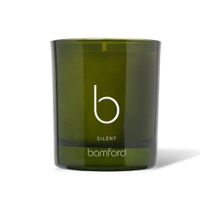How to sleep better – 8 top tips for restorative slumber
I asked sleep scientists, mattress manufacturers and medical professionals how to sleep better and feel fresher in the morning
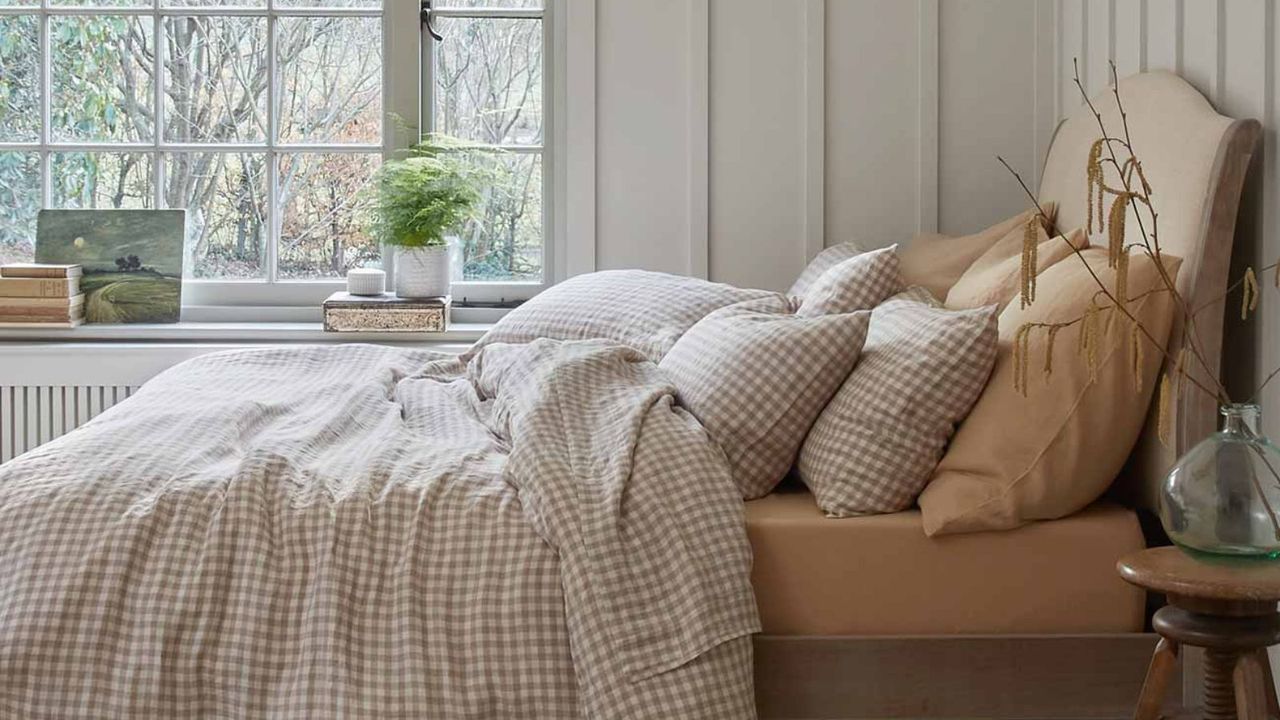

As H&G's resident sleep writer, I'm often asked how to sleep better. It's the key to improving our mood, supporting our immune system, and boosting our productivity. When we don't get enough sleep, we make ourselves more vulnerable to all sorts of physical health risks, from everyday infections to cardiovascular problems, and pave the way for serious burnout.
When I was a university student at the English equivalent of the Ivy League, I was overworked and underslept. It took a toll on my mental and physical health that culminated in a nasty flu, right before my finals. If I wanted to pass my exams and make a quick recovery, I had to learn how to sleep better.
I grew to understand the importance of investing in the best mattress and the best bedding for my sleep needs. I experimented with all sorts of bedroom ideas to optimize my design and decor for sleep. I ate the right foods, established a new routine, and now, it's my job to teach you how to sleep better.
How to sleep better for a healthy, happy life
I've combined my first-hand, hard-won insights for how to sleep better with advice from leading sleep scientists, mattress manufacturers, and medical professionals. To save you time and money, I've hand-picked a selection of sleep products to meet every need and suit every budget.
1. Define your sleep style
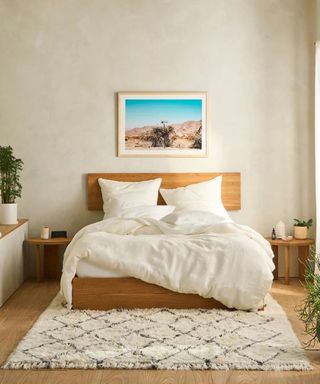
Before we begin, I'd like you to take a moment and consider your sleep style. Understanding how you sleep at the moment is the key to learning how to sleep better in the future.
'Sleep style' is a catch-all term that encompasses three key elements: your sleep position, which is how you tend to lie on the bed; your sleep temperature, which is whether you run hot or cool; and your sleep circumstance, which is all the little stresses in your daily life that could impact your sleep.
Let's take these terms one by one, starting with sleep positions. You either sleep on your front, back, or side, or a combination of the three as you move around in the night. Each sleep position has its merits and can be perfectly comfortable, as long as you're sleeping on the right mattress.
Onto sleep temperature. If you suffer from night sweats or hot flashes, or you tend to run a little warm, you're classed as a hot sleeper. If you live in a cooler climate, and you tend to wake up in a cold sweat, then you qualify as a cold sleeper. You can learn to control your sleep temperature with a set of thermoregulating bedding.
Finally, sleep circumstance: this covers everything from the conversations you had over dinner to the content you consume right before you sleep, as well as any seasonal allergies affecting your sleep. Many of these issues are complex, but a few have quick fixes: for example, an antibacterial duvet could bust the dust mites and save you from sneezing and spluttering.
2. Find the right mattress
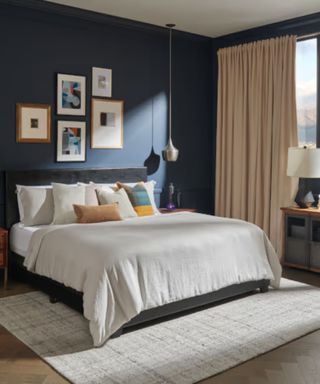
To get your best sleep, you need the best mattress that meets your sleep needs. I asked certified sleep expert and Woolroom Managing Director, Chris Tattersall, to tell us more.
Chris believes that 'the key component to supporting your body is your mattress. Choosing the right one for your personal needs, with the correct firmness, is integral to ensuring good sleep posture'.
Some people say that you should always opt for the best firm mattress to support your spine, but that might not be the best fit for every sleeper. If you suffer from chronic pain, and you're looking for a mattress to relieve pressure and ease aches, you'd be better off with a memory foam mattress to bear your weight and mold to the shape of your body.
According to Chris, 'it is important to find the right middle ground. That's why I'd always recommend a medium tension mattress, as these provide the ideal level of support for your spine and hips.' A hybrid mattress should strike the right balance between comfort and support, cushioning your joints while supporting your spine.
Chris cautions against 'a mattress that is too soft, which will cause your hips and shoulders to pinch and your spine to curve downwards, putting unwanted pressure on your joints and muscles that could lead to discomfort.'

Chris is a certified sleep expert and the managing director at Woolroom, the premium bedding brand that specializes in wool products.
To help you decide which mattress you should buy, I've rounded up a few of the best beds to support every sort of sleeper. Each mattress is assessed against the same criteria: comfort; quality of construction; cooling properties; motion isolation; edge support; and the all-important price.
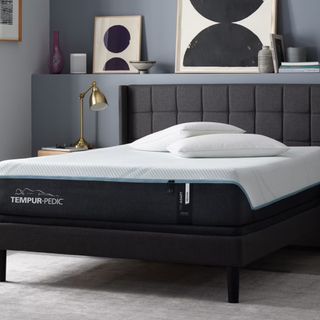
This hybrid mattress is soft enough to cushion your joints yet supportive enough to lift your lumbar region and lengthen your spine. Sure, it's expensive, but you could get it for less in the mattress sales.
You can find more detail in our Tempur-Pedic ProAdapt Medium Hybrid Mattress review.
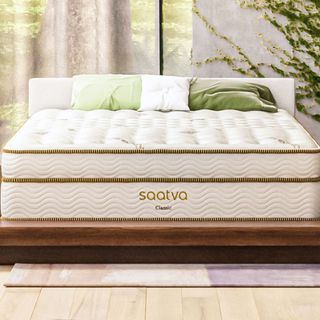
I'd recommend the Saatva Classic for just about anyone, but it's a particularly good option for back sleepers. It's firm enough to stop you from sinking in yet plush enough to lend comfort.
You can find more detail in our Saatva Classic Mattress review.
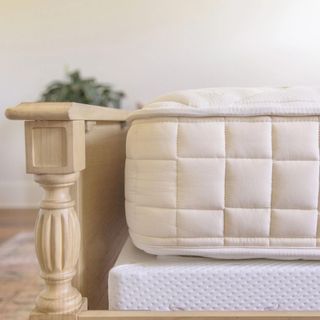
Filled with organic wool and cotton, this firm mattress is suitable for stomach sleepers and eco-conscious shoppers.
You can find more detail in our Naturepedic Chorus Mattress review.
3. Invest in the best bedding
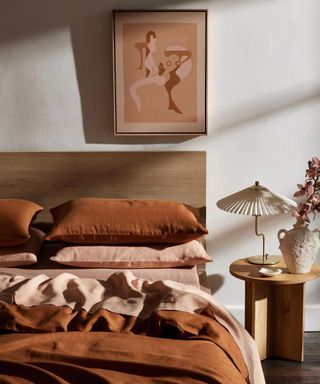
Once you've bought the best mattress, it's time to buy the bedding. While you could pick up a cheap set of sheets and shams from your local home retailer, the best places to buy bedding are specialist sleep stores. That's where you'll find the widest range of products, each of which is scientifically designed and stylishly finished.
First, you need the best bed sheets. I recommend lightweight linen for hot sleepers and a cotton sateen set for a touch of luxury. Either bamboo or eucalyptus would make a great eco-friendly option for conscious shoppers. Just make sure to steer clear of polyester: it's hot, scratchy, and the worst bed sheet material on the market. If you're a sensitive sleeper, or you'd prefer to sleep on natural fibers, I recommend a set of hypoallergenic bed sheets.
Next, you need the best pillow. You want something that's soft, yet supportive to cushion your head, neck, and shoulders. Side sleepers might prefer a thicker pillow, while stomach sleepers will appreciate something flatter to prevent neck strain. You could always invest in an adjustable pillow so that you can select the firmness.
Top it all off with one of the best duvet inserts and comforters. Seriously hot sleepers should narrow the search to the best cooling comforter, while cold sleepers living in cooler climates can stay cozy under the best warm comforter. You could also shop for comforters by material: down retains heat and maintains loft to make a beautiful bedspread, but down alternative might be more suitable for vegan shoppers and sensitive sleepers.
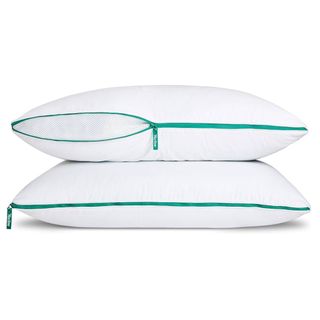
I can't shut up about this pillow. Designed with two zippers to let air in and out, the Marlow Pillow is the only adjustable pillow I've seen that doesn't make a mess when you try to change the height.
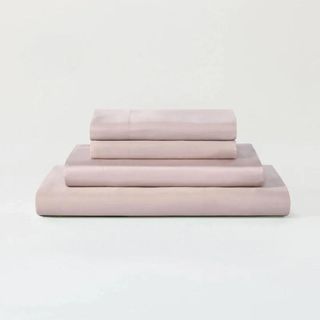
Eucalyptus is naturally thermoregulating and moisture-wicking. These sheets should keep you just the right side of cool and dry, whatever the weather.

This comforter comes in four warmth weights to suit every style of sleeper and sort of climate. If you only get one, go for the All-Season Comforter, and bag it for a bargain in the bedding sales.
4. Set the scene
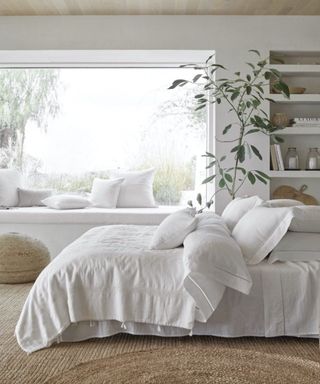
Although the bed is the focal feature of the bedroom, there are plenty of other factors to consider as you create your sleep sanctuary. Ideally, you want your sleep environment to look, feel, sound, and smell good. I asked Alison Jones, the in-house Sleep Expert at Sealy, for a few of her top tips.
Alison says that 'using the best candles in your bedroom is not only visually appealing but it will also bring a gorgeous scent into the air that can help you drift off to sleep. Alternatives to candles include essential oil diffusers, electric wax melt burners, reed diffusers, and even incense sticks, which do not require an open flame. Similarly, listening to bedroom soundscapes, such as logs burning on an open fire can be incredibly relaxing,' says Alison. 'To replicate the soothing sound perfectly, all you need is a wood wick candle.'
All this burning might boost the temperature in your bedroom, so I recommend setting your thermostat somewhere between 60 and 75°F: according to the sleep scientists at Harvard Medical School, that's the ideal temperature for sleep.
If you've got some time on your hands, and you don't mind doing a little heavy lifting, you could follow the principles of bedroom Feng Shui and rearrange your furniture to suit your sleep space. If you're in the middle of remodeling, it's worth learning about the best and worst bedroom colors for sleep.
Bambord B Silent Candle | View at BamfordThis is one of our favorite candles for sleep (it's available as a diffuser too). Not only does this boast a beautiful blend of calming lavender, aromatic frankincense, and marjoram, it's made from 100% natural wax. The packaging is 100% recyclable and crafted from sustainably sourced FSC-approved paper.

Alison is the in-house Sleep Expert for Sealy, the mattress manufacturers. Her expertise extends beyond the bed to encompass lifestyle hacks and interior design tips that promote better sleep.
5. Design the ideal dinner
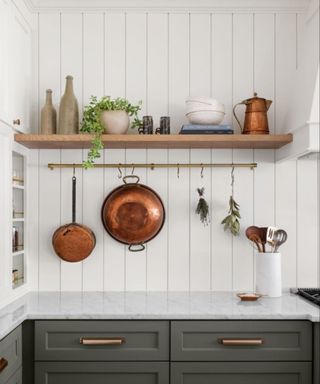
It's not all about the bedroom. What you eat and drink throughout the day can make a major impact on your sleep quality. When you're meal planning, try to incorporate ingredients that are rich in antioxidants, fiber, and fatty acids. You can't go wrong with fresh produce and plenty of fruit and vegetables.
If you're serious about sleeping better, you should prepare to limit your intake of caffeine, especially in the afternoons and evenings. This is all to do with a neurotransmitter, called adenosine, which is an organic compound in our cells that makes it easier to fall asleep. I asked Dr. Bruce D. Forman to tell us how it works.
Bruce says that 'caffeine blocks adenosine receptors in the nervous system, which is why too much caffeine or consumption late in the day can make it difficult to fall asleep. Caffeine's half-life is between four and six hours. If you don't know, half-life means the amount of time it takes for 50% of a substance to be metabolized. So, even after four or six hours have elapsed, half of the payload of caffeine is still at work. After another four to six hours, half of the remaining 50% is metabolized.'
Here's the kicker: 'theoretically, the caffeine contained in two cups of coffee you had at 9am could still be at work and keeping your brain stimulated as you are winding down and getting ready for bed.'

Bruce practices behavioural sleep medicine. He specializes in treating insomnia, among other sleep disorders, and solving mood problems with better sleep.
6. Make a routine and stick to it
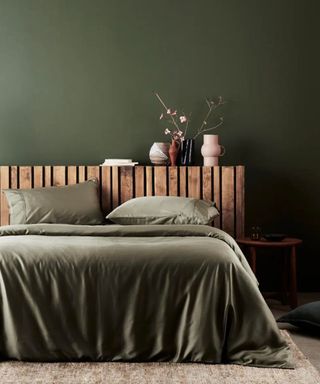
If you're raising kids, or you've spent a lot of time around little ones, then you'll be familiar with the concept of a bedtime routine. For consistently deep sleep, it's worth making your own bedtime routine for adults.
The rules are pretty simple. You should try to wake up and go to sleep at the same sort of time every day to settle your circadian rhythm. You should aim to eat dinner at least two or three hours before you sleep to aid digestion and try to take regular exercise (but not too close to bedtime).
I asked Major Allison Brager, a sleep scientist and soldier with the US Army, about the daily steps she takes to get better exercise. A lot of her advice is standard stuff: hydrate; eat nutritious foods; get your steps in. What surprised me most was her hard-line approach to working from bed.
'There is a psychology to sleep,' explains Alison. 'Allowing yourself to watch Netflix or answer late-night emails in bed can negatively impact sleep. Create a boundary that your bed is not a place in which to lounge around throughout the day. Set up a relaxing space to unwind in the hours leading up to bedtime and head to your bedroom right before you plan to fall asleep.'

Alison is an Army neuroscientist who studies sleep and how it suffers in extreme environments and high-stress situations.
7. Dim the lights

As a life-long big light hater, I believe that turning on the overhead light is one of the biggest bedroom lighting mistakes you can make. Such a harsh glare is bound to strain your eyes and disrupt your circadian rhythm. I suggest you stick to soft, warm lamps and switch off your electronics for at least an hour before bed.
Jeff Khan is the founder of Rise Science, the sleep and energy tracker app. He's a big believer in blue light blocking glasses to improve sleep: 'I put them on 90 minutes before bed. The jury is still out on whether they help you get better sleep, and they might be more helpful for those with circadian rhythm-related sleeping difficulties, but they can be a helpful cue to your body that it's time to wind down for bed'. I suggest the livho Blue Light Blocking Glasses at Amazon, which boast more than 70,000 five-star reviews. Happy customers praise the light feel and close fit of these blue light blocking glasses. A few reviewers even attribute the cessation of their headaches to the wearing of these glasses, although others question their efficacy.
Jeff acknowledges that 'the power of blue-blockers to improve sleep is up for debate, but the negative effects of light at night definitely aren't. You want to keep your bedroom as dark as possible − like a cave. Blackout curtains are one of the most effective ways to do this, and they don't have to be expensive or fancy to do their job'. The Gemala Thermal Insulated 100% Blackout Curtains from Wayfair are pretty, yet practical, and come in every conceivable color to complement your decor.
'If you can't spring for blackout curtains, the next best thing is a sleep mask', says Jeff. Something like the ASUTRA Silk Eye Pillow 'could help you create that pitch black environment we need for healthy sleep,' and it comes with the Oprah Winfrey seal of approval.

Jeff is the CEO of Rise Science, the sleep and energy tracker app. He works with elite athletes and employees of Fortune 500 companies to improve their sleep and boost their health, well-being, and productivity in tandem.
8. Relax and unwind
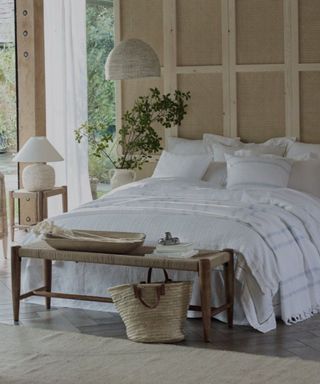
You can lower the lights, buy the best bedding, and eat all the right foods, but you'll never get good sleep if you lie awake stressing. One of the best ways to relieve mental and physical stress before sleep is to stretch. I asked Dr. Mike Basten, DPT, to talk us through a few simple moves to wind down well.
First, Mike suggests the three-way prayer stretch. 'From child's pose, shift your hands right and lift to stretch each side of your back and forward to elongate the spine. Repeat three times each way, holding for 30 seconds. This stretch relieves back tension and enhances spinal flexibility.'
Move onto lower trunk rotations. 'Lie on your back with knees bent and feet on the floor, and rotate your knees from side to side, keeping your shoulders grounded,' says Mike. 'Perform 20 reps on either side to loosen the lower spine and alleviate lower back stiffness'. This step is especially important for back sleepers and anyone who suffers from chronic pain.
The final step is the simplest: diaphragmatic breathing. 'Lie on your back with one hand on your belly and the other on your chest,' says Mike. 'Breathe deeply through your nose, focusing on diaphragm expansion. Practice for three minutes. This technique promotes relaxation and eases you into sleep by lowering your heart rate and calming the nervous system'.

Mike is a licensed physiotherapist with more than 30 years of experience in the field of physical therapy.
How to sleep better FAQs
How can I sleep better with anxiety?
My advice is much the same: get plenty of natural light and exercise; steer clear of stimulants; and keep your bedroom cool and quiet. I'd also recommend that you review your medications with your doctor, just in case you're taking any accidental stimulants. If you're following all the right advice, and you're still struggling to sleep, you could always try sleeping with a weighted blanket. As an anxious sleeper who suffers from occasional sleep paralysis, I started out as a skeptic, but the Luxome Weighted Blanket soon converted me.
How can I sleep better as a pregnant person?
According to the American Pregnancy Association, the best sleep position during pregnancy is on your side, rather than your back or stomach. Side sleeping places the least amount of pressure on your internal organs and should boost the circulation of blood and nutrients around your body, to your baby. If you aren't used to sleeping on your side, you could use one of the best pillows to support your body.
Final thoughts
It can be hard to sleep at home, when you're surrounded by the little stresses of daily life. You could spend thousands of dollars and fly hundreds of miles to take part in a sleep retreat at a luxury hotel, or you could save yourself the trouble and learn how to create a sleep retreat at home. Alternatively, you could get deeper, cleaner sleep for free when you follow these Scandinavian sleeping tips.
If you're feeling brave, and you're keen to experiment with new ways to sleep better, you could try grounding your mattress. I asked the experts: 'do grounding sheets work?' A lot of anecdotal evidence indicates they do, though we're yet to see conclusive scientific evidence.
Sign up to the Homes & Gardens newsletter
Design expertise in your inbox – from inspiring decorating ideas and beautiful celebrity homes to practical gardening advice and shopping round-ups.

Emilia is our resident sleep writer. She spends her days tracking down the lowest prices on the best mattresses and bedding and spends her nights testing them out from the comfort of her own home. Emilia leads a team of testers across America to find the best mattress for every sleep style, body type, and budget.
Emilia's quest to learn how to sleep better takes her all around the world, from the 3Z mattress factory in Glendale, Arizona to the Hästens headquarters in Köping, Sweden. She's interviewed luxury bedding designers at Shleep and Pure Parima, as well as the Design Manager at IKEA. Before she joined Homes & Gardens, Emilia studied English at the University of Oxford.
-
 Natural and industrial elements combine in this contemporary farmhouse home
Natural and industrial elements combine in this contemporary farmhouse homeThis Tennessee country home offers a fresh perspective on traditional, contemporary and rustic styles
By Karen Darlow Published
-
 Is it time to ditch all-white bathrooms? Here's everything I learned when I asked designers about bringing more color into my bathroom
Is it time to ditch all-white bathrooms? Here's everything I learned when I asked designers about bringing more color into my bathroomThe latest bathroom trends have me questioning my white bathroom fixtures, so I asked designers how to introduce more color
By Charlotte Olby Published
